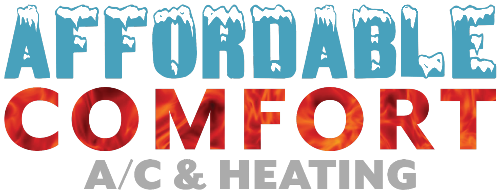How to Select the Right HVAC System: Exploring the Different Types
If you’ve renovated the house, added more rooms, or performed an energy assessment, HVAC systems should be next on the agenda. Considering several HVAC types in use across the country, choosing the optimal system can be challenging and depend on a few factors. However, the best way to understand the various methods and their benefits is to break them down and explain how they work.
Here are the most popular HVAC systems and their key features.
Ductwork cooling and heating system
The most traditional HVAC system in the USA is duct-based HVAC. These systems usually contain a separate air conditioning unit and furnace connected to the house and rooms via ductworks in the walls and ceiling. A series of pumps disperse the cold or hot air throughout the house. AC units are usually external to allow refrigerant circulation, while furnaces are typically internal and use either fuel or electric coils to heat the air.
Duct systems are relatively cheap but require a considerable investment in the ductwork itself if the house doesn’t already have one. Ducts also need regular maintenance to achieve the best energy efficiency and air circulation.
Duct-free split systems
Also known as mini-split, this HVAC system doesn’t use ducts. It contains separate internal and external units connected by lines and cables to circulate refrigerant liquid. Duct-free split systems work better for climate controlling different rooms since the internal team is usually mounted inside a single house zone. It’s also one of the best options for retrofitting an HVAC system in a house without existing ones.
Some mini-split systems don’t work in freezing temperatures, and homeowners need to choose the correct AC unit depending on their needs and house conditions.
Zoned duct systems
A zoned HVAC system expands upon the duct-based system with a series of valves and dampers inside the ducts. This system allows homeowners to control which house sections receive climate-controlled air. They otherwise work similarly to duct systems with furnaces and AC units.
Zoned systems are costlier to implement and maintain but will generally reduce energy costs during the cooling and heating seasons. Very few homeowners need entire houses climate-controlled at all times, and the zoning system allows for more precise control and energy management.
Additional features
Depending on the system in place, owners can also choose between different features and options to ensure the new HVAC system is a perfect fit.
HVAC units generally come in single-stage, two-stage, or variable speed settings. The single-stage system runs the compressor unit at total capacity at all times while the teams are working. They can cool or heat the air faster but will turn on and off repeatedly to maintain adequate air temperature. Two-stage systems have a lower and a higher setting to compensate for smaller temperature differential with a less energy-intensive operational mode. According to thermostat settings, variable speed compressors can work from anywhere between 10% and 150% of a single-stage compressor’s capacity and adjust their power output. Higher-stage systems are more expensive but usually have better energy efficiency and lower overall costs during peak seasons.
Most modern HVAC systems also come with a humidity control option. Humidity is another vital aspect in how we perceive temperature, and climate control won’t be of much use if there’s too much humidity. Homeowners can either opt for separate humidifiers and dehumidifiers or HVAC units that have them built-in, depending on their climate and requirements.
Choosing the perfect size
When choosing an HVAC system, size is essential. An undersized system won’t circulate air effectively, while an oversized unit will drain too much power and cost more due to constantly switching on and off. A professional HVAC service can inspect the home, outline the best HVAC system and size to use, and provide quotes on installation and maintenance. These services can save money, time, and stress.
Trust locally-owned and operated Affordable Comfort A/C and Heating for HVAC preventative maintenance and thermostat services. Call 602-574-1205 to schedule a consultation.

